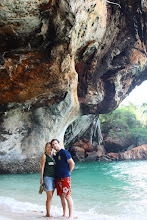cambodia has a monarch, called king norodom sihanouk. you'll see on the map i posted a while ago, that the coastal strip is named "sihanoukville", after him.
indochina was given independence from the french, and when this happened, cambodia lost it's hold over the mekong delta, which was given to the vietnamese.
as the vietnam war flourished, king sihanouk declared his position as fence-sitter (although he was considered a communist sympathizer). anyway, he's in beijing on a visit, and a military coup (with the backup of the USA) hop onto his throne and over-throw his rule.
the king appeals to his followers to assist in overthrowing the overthrowers - and this ignited the first sparks of civil war. shortly thereafter, a rebel group called the khmer rouge began to use the king and his cause to gain the support of the people.
unfortunately, the khmer rouge were a bunch of racist, power-hungry madmen - which gave the US a fantastic excuse to get involved, as they do, and bomb the shit out of the country, as they do, in order to flush out the anti-american communists, as they put it.
cambodia was now to suffer relentless bombings and invasions from the vietnamese and US forces, from 1969 - '73. around 2million cambodians became refugees as they fled their home, phnom penh. the attacks created a rebellion / unintentional recruitment drive for the khmer rouge. so ironically, the very movement that the US were so aggressively trying to quash was infact spurned in momentum and supporters, by the US.
when the war came to an end, in 1975, the country was in famine. 75% of it's livestock had been destroyed and any agricultural repair and renewal was left to be done by a nation too malnourished and physically disable to labour.
in a US aid report:
"without large-scale external food and equipment assistance there will be widespread starvation between now and next february ... slave labour and starvation rations for half the nation's people (probably heaviest among those who supported the republic) will be a cruel necessity for this year, and general deprivation and suffering will stretch over the next two or three years before cambodia can get back to rice self-sufficiency".the capital at its weakest, the khmer rouge pounced on phnom penh and took full power. they changed the country's name to "democratic kampuchea" and invaded all major cities, driving every last person out to the rural areas for forced labour. this is when the crazies really started to come out:
as they attempted to rebuild the agriculture, they based in on the model and practices of the 11th century - discarding any modern knowledge or technologies that had been tried and perfected since then. they refused western medicine and aid - and any other artifact that resembled the west.. they torched every collection of literature, historical records and archives. they pulled the temples to the ground.
of the 8 million cambodians that were left after the war, around 2million were killed during this rule of the khmer rouge - through disease, malnutrition, torture, punishments, executions and exhaustion from forced labour.
during this genocide, the killing fields were named - a cite that we visited during out stay in phnom penh - several mass graves which were filled to the brim with broken bodies - of men, of the elderly, of women and of children. no one could escape the brutality of this ruthless regime. a source of this slaughter was the tuol sleng prison (now a museum, which we also visited). the prison is notorious for its mass executions and one of the most disturbing parts of the museum's exhibition was the millions and millions of mug-shot photographs on display. these were the faces of the victims - a sadistically pedantic system the khmer rouge used to document those they put to death.
further examples of the craziness can be seen in the types of people they were targeting. firstly all minority groups - vietnamese, chinese, muslims.
then all of those really useless public servants - you know, like all the doctors, lawyers, teachers, trained professionals and anyone with a tertiary education.
i found this quote, made by a man called robert d. kaplan and thought it very fitting:
"eyeglasses were as deadly as the yellow star, as they were seen as a sign of intellectualism."
anyway, in '78 cambodia was invaded by the vietnamese and this pushed the khmer rouge to establish their own state of pro-soviet crazies, called the people's republic of kampuchea.
after three years of invasion, cambodia was further split into three divisions: the khmer rouge, the group still led by king sihanouk, and the khmer people's national liberation front.
in the years that followed, the US controlled certain areas, as did the UK. there were major economic sanctions, which crippled the country's recovery even further. the result: a badly wounded, exhausted, diseased nation, crippled and weak, defenseless and senseless, poor, impoverished and uneducated.
by 1989 the world assisted in peace efforts, which took two years. finally a settlement was reached in '91 and the crazies were disarmed by the UN.
old king sihanouk had his throne returned, and has been ruling cambodia since '93. there've been a few hiccups since then, but ultimately this country has made incredible stride to full recovery.
knowing this history puts an incredible perspective on a visit to cambodia. and understanding the kind of torment and genocide it has seen, only makes the progress, the growth and the people's temperament all the more awe-inspiring.
what an incredible country.
all factual information sourced via www.wikipedia.com



























































